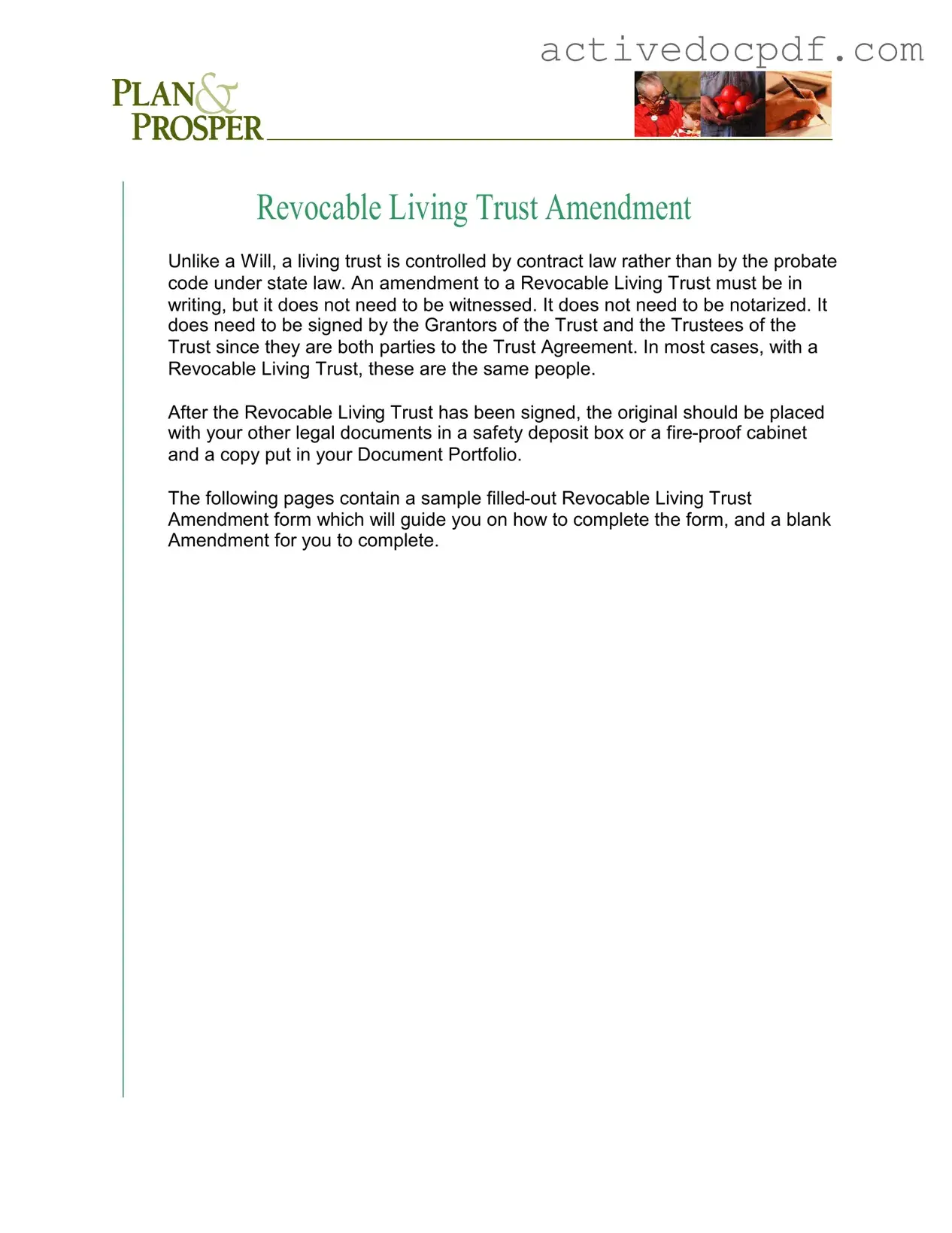A Trust Amendment form is a legal document used to make changes to an existing Revocable Living Trust. Unlike a Will, which is governed by probate law, a living trust operates under contract law. This means you can modify the terms of your trust as needed, provided you follow the correct procedures outlined in your original trust agreement.
Do I need witnesses or notarization for the Trust Amendment?
No, a Trust Amendment does not require witnesses or notarization. However, it must be in writing and signed by the Grantors and Trustees of the Trust. Since these roles are often filled by the same individuals in a Revocable Living Trust, this makes the process straightforward.
Who needs to sign the Trust Amendment?
Both the Grantors and the Trustees must sign the Trust Amendment. The Grantors are the individuals who created the trust, while the Trustees manage it. In many cases, these roles are held by the same people, simplifying the amendment process.
What should I do with the original Trust Amendment once completed?
After signing the Trust Amendment, it’s important to store the original document safely. Keep it with your other legal documents, ideally in a safety deposit box or a fire-proof cabinet. Additionally, consider placing a copy in your Document Portfolio for easy access.
Can I make multiple amendments to my Trust?
Yes, you can make multiple amendments to your Trust. Each amendment should clearly state which parts of the original Trust Agreement are being modified. It’s essential to keep a record of all amendments to ensure clarity and avoid confusion in the future.
While there is no strict format required, the amendment should include specific elements such as the date, names of the Grantors and Trustees, and the modifications being made. The provided sample form can serve as a helpful guide when drafting your own amendment.
What happens if I don’t amend my Trust when needed?
If you fail to amend your Trust when necessary, your original terms will remain in effect. This could lead to unintended consequences, especially if your circumstances change—such as marriage, divorce, or the birth of a child. Regularly reviewing and updating your Trust ensures it reflects your current wishes and protects your assets accordingly.
